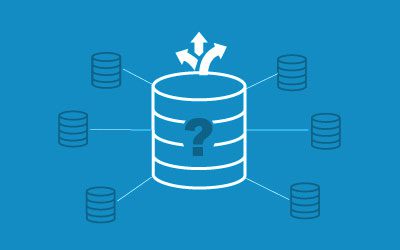When you drive across the country, you’ll see silos used by farmers for storing grain and corn. They’re hard to miss, cylindrical towers reaching up a hundred feet or more over the flat landscape. The word “silo” has been adopted in the business world, but with different meaning. While a physical silo is used for stockpiling a commodity like grain, a corporate silo refers to the hoarding of information. Such data silos tend not to be good for optimal business management outcomes, yet they’re quite common. Innovative software now offers a way to avoid the silo phenomenon in your company.
What is a Data Silo?
A data silo is a collection of data that’s isolated from people who might benefit from seeing it. In some cases, the people who need the data don’t even know it exists. Alternatively, you can have two separate data sets, each differently describing the same area of the business. For instance, as we’ve seen many times, a company can have two unrelated databases for a function like accounts payable management, each offering users a different version of reality.
How Do Data Silos Come into Existence?
Data silos can arise for a number of reasons. Usually, it’s by accident. Two teams manage overlapping business processes separately. Each has its own information system and database. The result is two different data sets for the same basic information. Or, a company can update computer systems and end up with two versions of the same database, operating independently. In some cases, though, the data silos are deliberate. The practice reflects a corporate culture where managers compete with one another—trying to keep valuable data out of the hands of professional rivals.
Why are Data Silos Bad?
Keeping different versions of the same data in multiple silos is bad for business in more ways than one. Data silos make it hard to for people to do their jobs. For example, an accounting staffer may waste time collecting a debt that has already been declared uncollectible, but that helpful bit of information is hidden in a data silo. Teams may adopt awkward, wasteful workflows to hop between data silos to accomplish their tasks. There are costs involved in cleaning up discrepancies in data. When the silos are deliberate, they can contribute to a toxic work environment that inhibits growth and good morale.
How to Avoid Data Silos?
It is definitely possible to avoid data silos or break down the ones you may already have in your business. A new generation of accounting and Enterprise Resource Planning (ERP) software is the key to making this happen. For example, Microsoft Dynamics 365 Business Central offers extensive application and data integration features. The platform enables system architects to connect siloed sources of data and “normalize” them—eliminating the silo once and for all. Business Central also allows for application-to-application connections that let users jump between siloed data in a single workflow.
Paired with Microsoft Power BI analytics software, Business Central gives managers a high-level overview of corporate data. This is good for management, but it also makes it harder for people to hoard data. People can come together to assess important business data instead of hiding it from peers. This is good for business growth and success in the long term.
We have worked with many clients on the identification and remediation of data siloes using Microsoft Dynamics 365 Business Central. To learn more about how we can help you in this regard, or to arrange a demo of Business Central, let’s talk.
Additional Business Central Resources
How Project Managers Can Benefit from Microsoft Dynamics 365 Business Central


